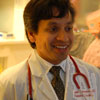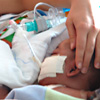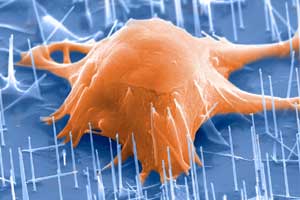[jwplayer config="QUEST Audio Player" skin="http://ww2.kqed.org/quest/wp-content/themes/quest/glow.zip" file="http://www.kqed.org/.stream/anon/quest/radio3-15_StemCells_blogclip1.mp3" ]
 Stem cell technology has only existed for a decade. And despite the Presidential ban on use of new lines of embryonic stem cells, the advances in research have happened quickly. And, according to Deepak Srivastava, Director of Cardiovascular Research at the UCSF Gladstone Institute, the many possible applications of stem cell work will be seen in the short term (over the next few years) and long term (regeneration of damaged organs could happen in 7 to 10 years, he says).
Stem cell technology has only existed for a decade. And despite the Presidential ban on use of new lines of embryonic stem cells, the advances in research have happened quickly. And, according to Deepak Srivastava, Director of Cardiovascular Research at the UCSF Gladstone Institute, the many possible applications of stem cell work will be seen in the short term (over the next few years) and long term (regeneration of damaged organs could happen in 7 to 10 years, he says).
[jwplayer config="QUEST Audio Player" skin="http://ww2.kqed.org/quest/wp-content/themes/quest/glow.zip" file="http://www.kqed.org/.stream/anon/quest/radio3-15_StemCells_blogclip2.mp3" ]
 Dr. Srivastava says, in the case of one of his patients, five-month-old Ryder Ortiz, stem cell technology could have been a godsend. And it might still BE a godsend, he adds. Ryder was born without a left ventricle, the heart chamber that shoots blood into the body. With stem cell technology, it may become possible to grow a new ventricle, and that would’ve been a huge boon to the infant Ryder.
Dr. Srivastava says, in the case of one of his patients, five-month-old Ryder Ortiz, stem cell technology could have been a godsend. And it might still BE a godsend, he adds. Ryder was born without a left ventricle, the heart chamber that shoots blood into the body. With stem cell technology, it may become possible to grow a new ventricle, and that would’ve been a huge boon to the infant Ryder.
[jwplayer config="QUEST Audio Player" skin="http://ww2.kqed.org/quest/wp-content/themes/quest/glow.zip" file="http://www.kqed.org/.stream/anon/quest/radio3-15_StemCells_blogclip3.mp3" ]
But here's the thing: Doctors jerry-rigged Ryder's circulatory system, and it's a process that works – until the patient hits his teen years. In many cases, that’s when the re-worked circulatory system fails. Now, if Dr. Srivastava's estimate is correct, and the technology develops in the next 7 to 10 years, that will be just in time for Ryder Ortiz, who will be inching nearer to adolescence at that time.
 Listen to the New Life for Embryonic Stem Cell Research radio report online.
Listen to the New Life for Embryonic Stem Cell Research radio report online.
37.76355 -122.458




